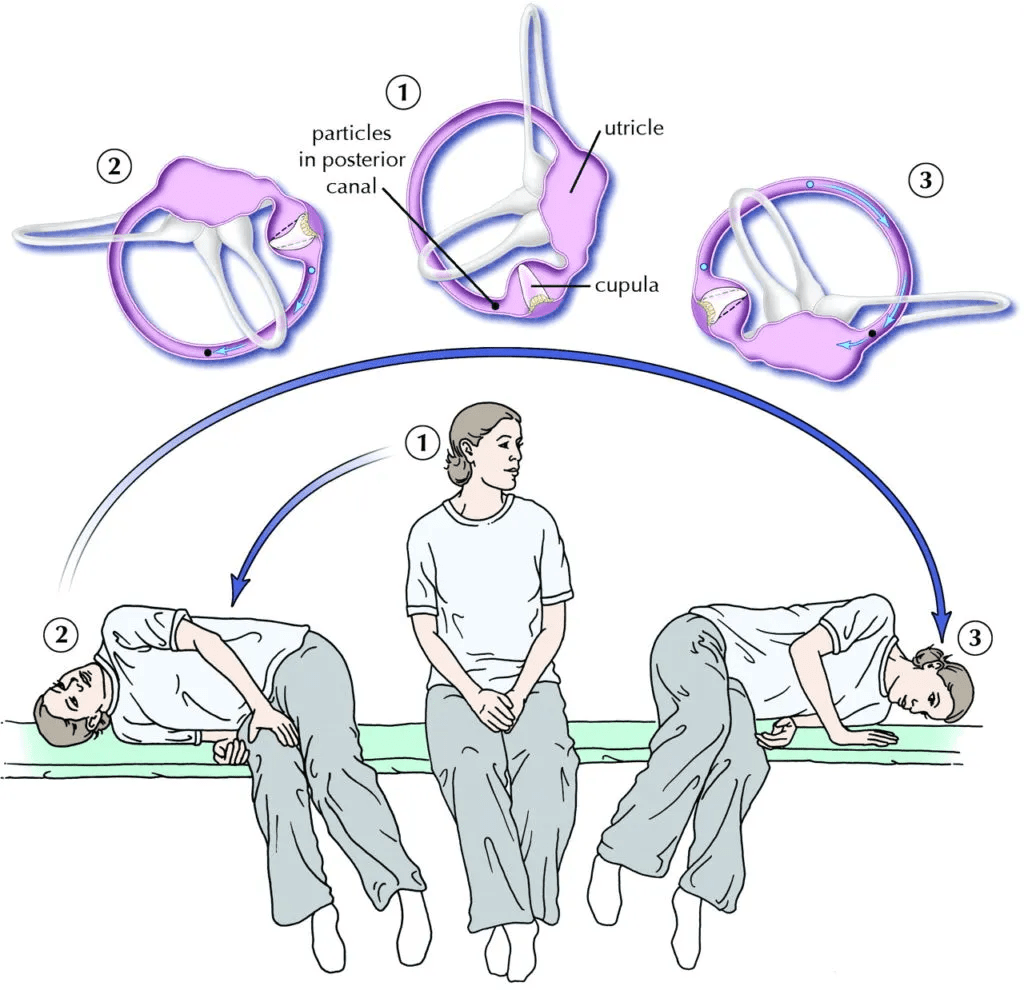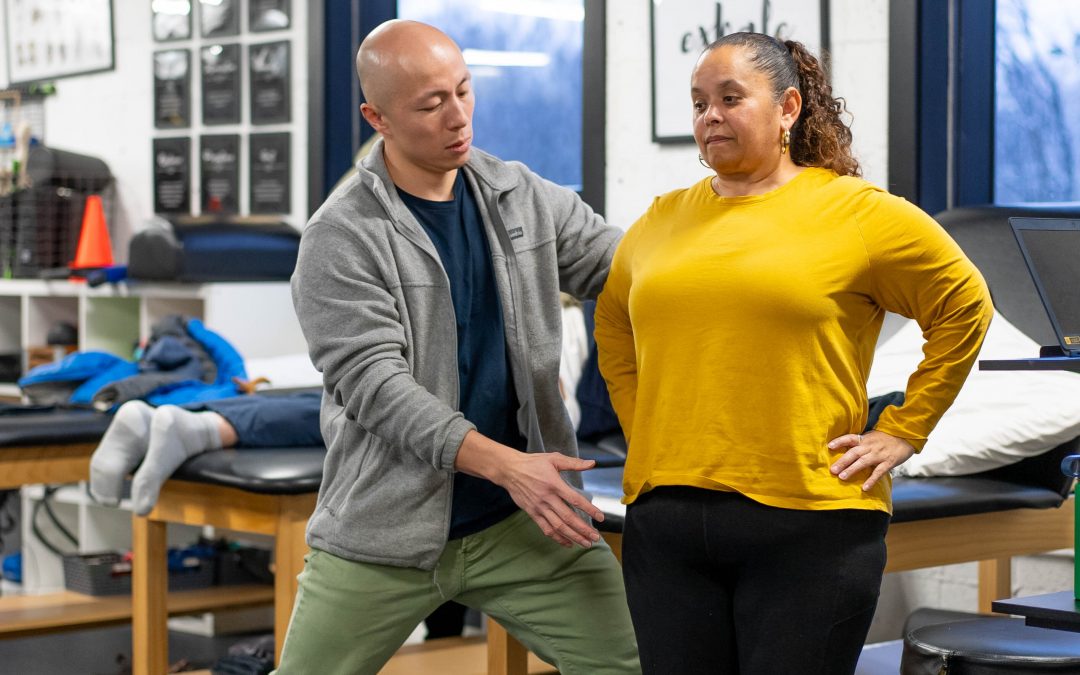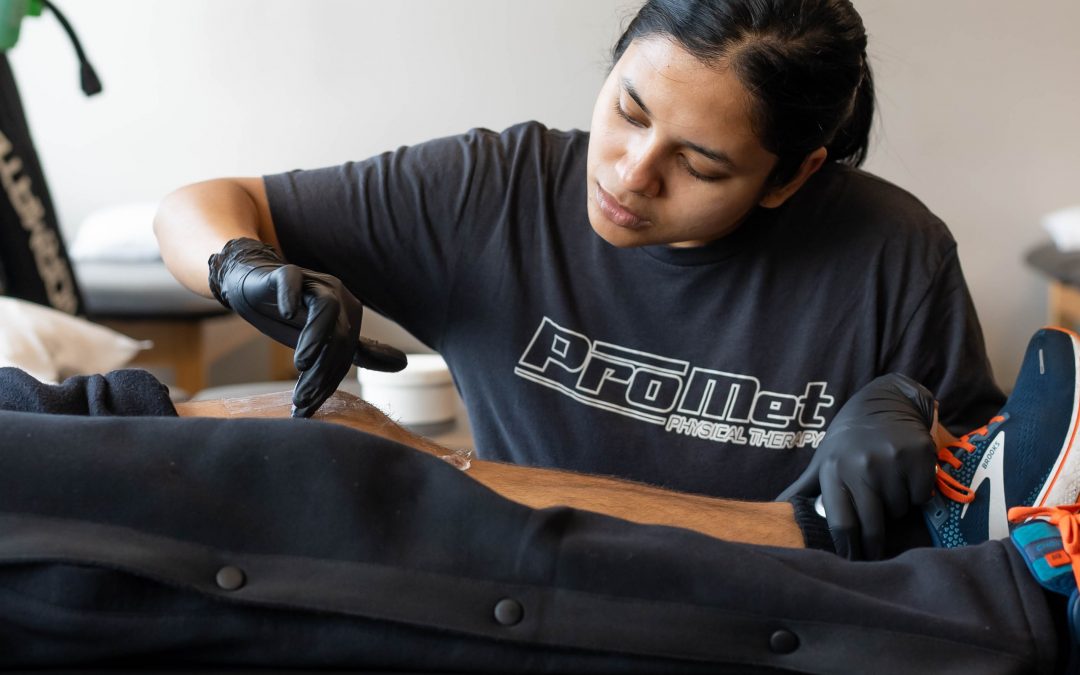Many people are not aware that Physical Therapy can be highly effective for treating various types of vertigo, the most common and easily treated being BPPV (Benign Paroxysmal Positional Vertigo).
The goal of this blog post is to provide an overview of what causes BPPV, describe the various types of BPPV, and to provide insight into the diagnosis and treatment of this common condition.
BPPV is one of the most common causes of vertigo which causes a sudden spinning sensation. These episodes can be brief and range from mild to intense and are usually triggered by changes in your head position. Most patients complain of vertigo when getting into bed or when waking up and rolling to one side.
BPPV originates in the inner ear, within a tiny organ called the vestibular labyrinth which is made up of 3 semicircular canals (posterior, horizontal, and anterior) and 2 otolith organs (utricle and saccule). The semicircular canals contain fluid and hairlike sensors and are responsible for monitoring rotational velocity of the head, while the otoliths contain crystals (otoconia) that monitor your head’s position relative to gravity.
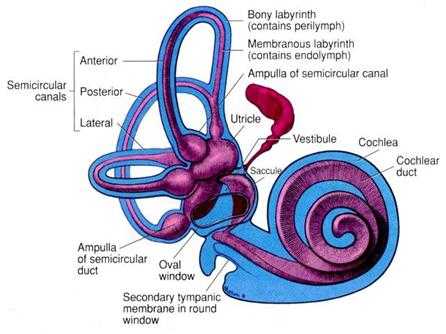
Vertigo occurs when crystals become dislodged from the otoliths and become free floating within the semicircular canals. This causes continued movement of the fluid within the canals (endolymph) even when head movement has ceased, causing a mismatch of feedback and vertigo symptoms.
BPPV can be categorized as either canalithiasis or cupulolithiasis and properly diagnosed by the type of symptoms that are provoked. Canalithiasis is the most common and easiest to treat and occurs when the crystals become free floating in the canals (as described above). Posterior canalithiasis BPPV is the most common (91%), horizontal canalithiasis is less common (8%), and anterior canalithiasis is very rare (1%). Cupulolithiasis is much more rare and can be further differentiated into geotropic and ageotropic. A skilled Physical Therapist will be able to easily differentiate the cause of your vertigo and provide proper treatment.
Posterior canalithiasis BPPV and horizontal canalithiasis BPPV are the most common forms of vestibular dysfunctions and are very easily treated and cured within a few sessions. We are able to differentiate and diagnose the different types of BPPV using positional testing such as the hallpike dix test. During this test, your head is supported by your Physical Therapist and is rotated 45 degrees to 1 side while in slight extension and you are moved from a sitting position to a lying face up position. A positive test will bring on vertigo symptoms as well as rapid eye movements (nystagmus). Based on the time it takes to bring on symptoms, the duration of symptoms, and the direction of nystagmus, the Physical Therapist can conclude what type of vertigo you are suffering from and provide immediate treatment.
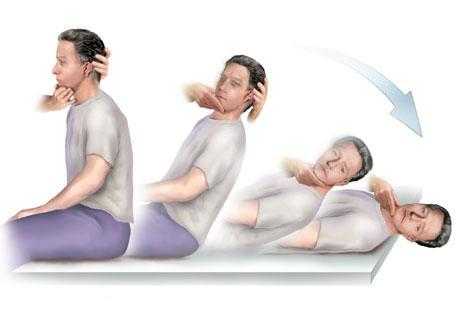
Horizontal canalithiasis BPPV is less common but is also easily diagnosed and treated. Instead of the hallpike dix, the roll test is utilized to diagnose this condition. The head is supported by your Physical Therapist in 20 degrees of flexion and rotated slowly to each side for 30-60 seconds. A positive roll test will bring on symptoms and nystagmus when the positive ear is facing towards the ground.
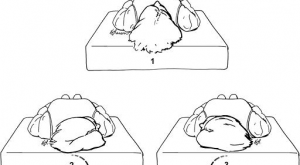
Treatment of posterior canalithiasis BPPV is quick, easy, and painless. This is done by performing canalith repositioning maneuvers. Your Physical Therapist will guide you through a series of positions which moves the crystals out of the semicircular canals and back into the otoliths, where they belong; effectively curing your vertigo symptoms. The maneuver is outlined below.
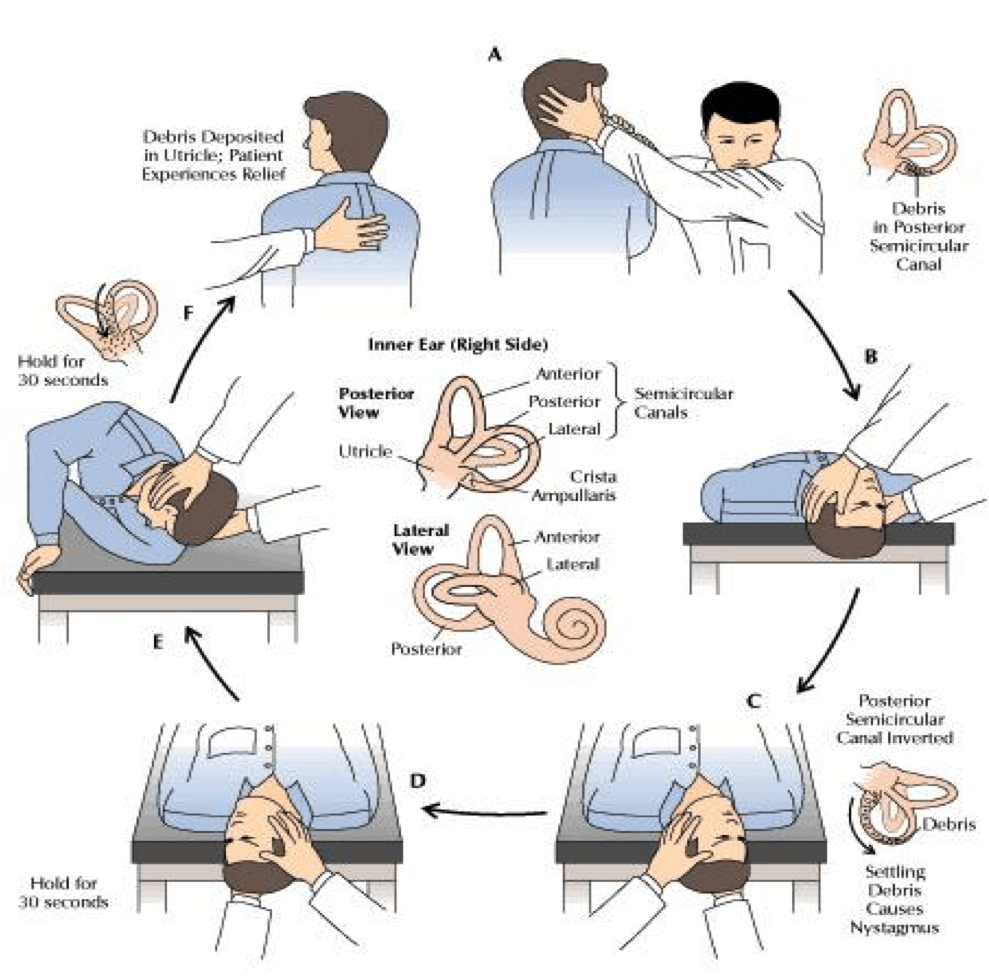
Horizontal canalithiasis BPPV is treated in a similar fashion. Please click the link below that will bring you to a video explaining the treatment of horizontal canal BPPV.
BBQ Roll Horizontal Canal BPPV
Treatment for BPPV has a one time 70-90% cure rate and can occasionally require more than 1 session to fully address. BPPV has a recurrence rate of approx 25% at the 1 year mark and 44% at the 2 year mark. Indicating that treatment may be needed again if symptoms start to come back.
If you are suffering from vertigo, do not hesitate to see a Physical Therapist, as a skilled therapist is able to differentiate the various causes of vertigo and provide effective treatment. Many people suffer from vertigo for years, before seeking treatment and are surprised by how quick they are relieved from their symptoms.
References:
-
Herdman, S. (2007) Vestibular Rehabilitation. Third edition, F. A. Davis
-
O’Sullivan, S. Physical Rehabilitation. Sixth Edition. 978-0803625792
-
Gill-Body, K (2001, Dec). Current concepts in the management of patients with vestibular dysfunction. PT Magazine, 40-57
-
Froehling DA, Silverstein MD, Mohr DN, et al. Benign positional vertigo: incidence and prognosis in a population-based study in Olmsted County, Minnesota. Mayo Clin Proc 1991;66:596–601.

